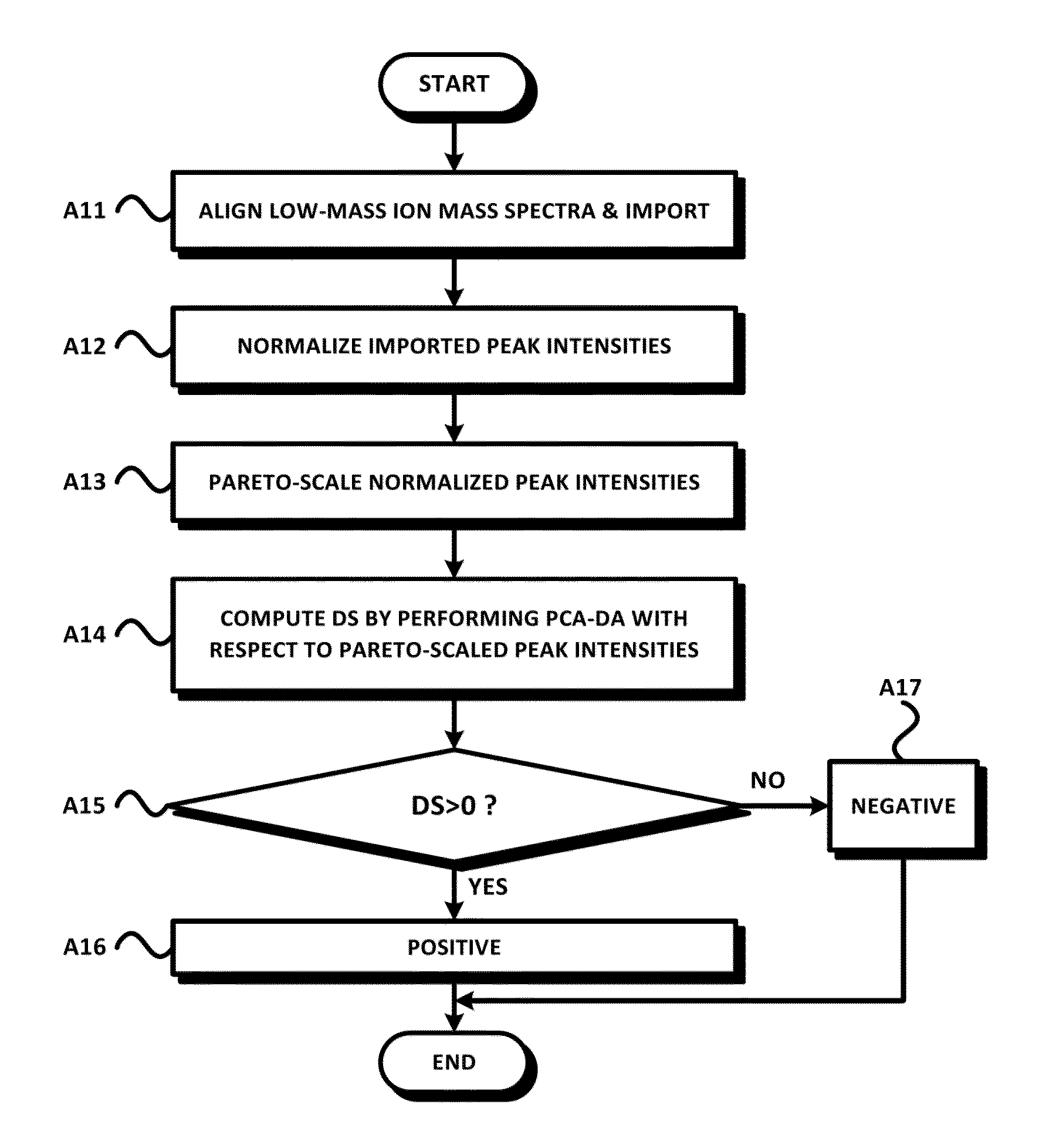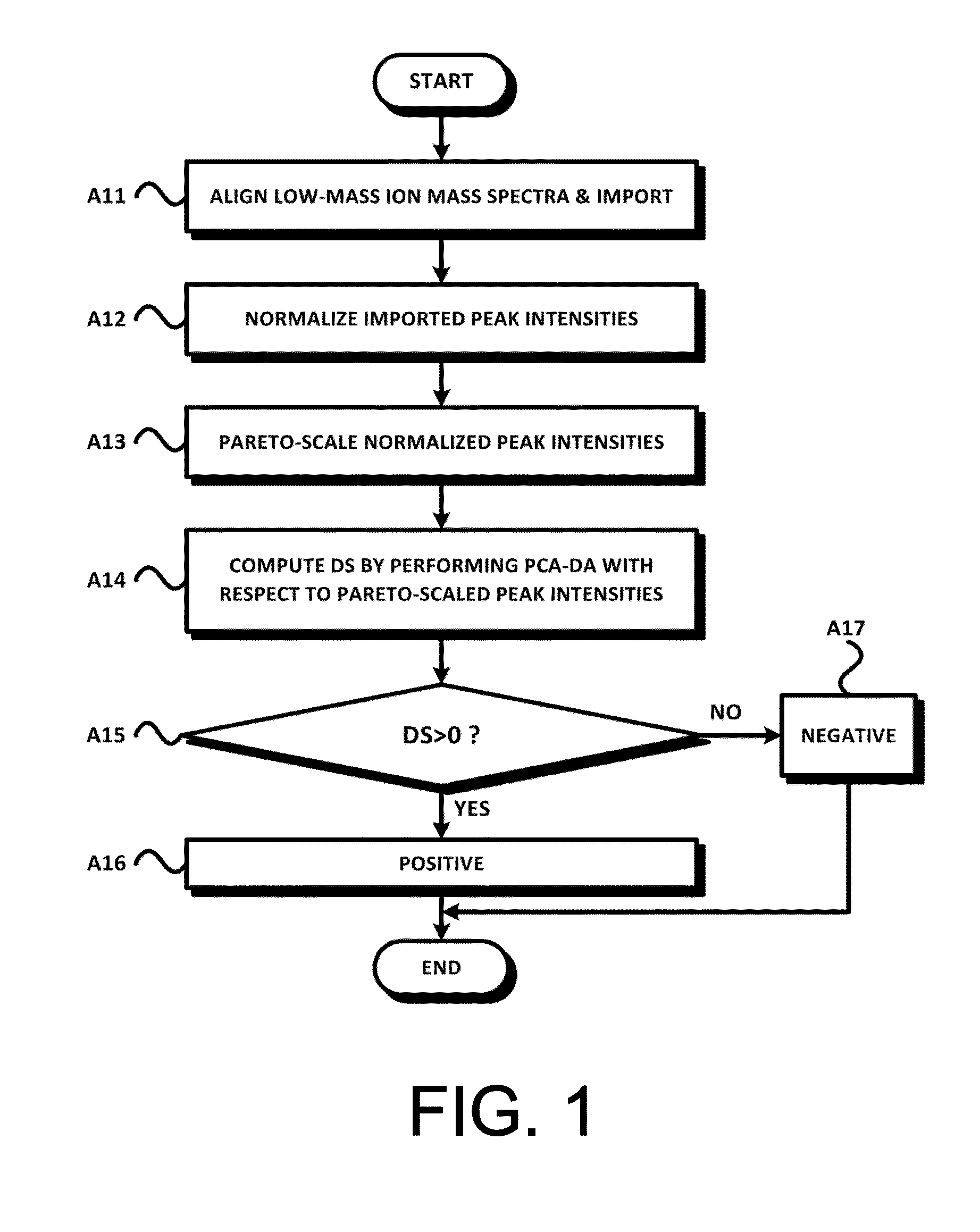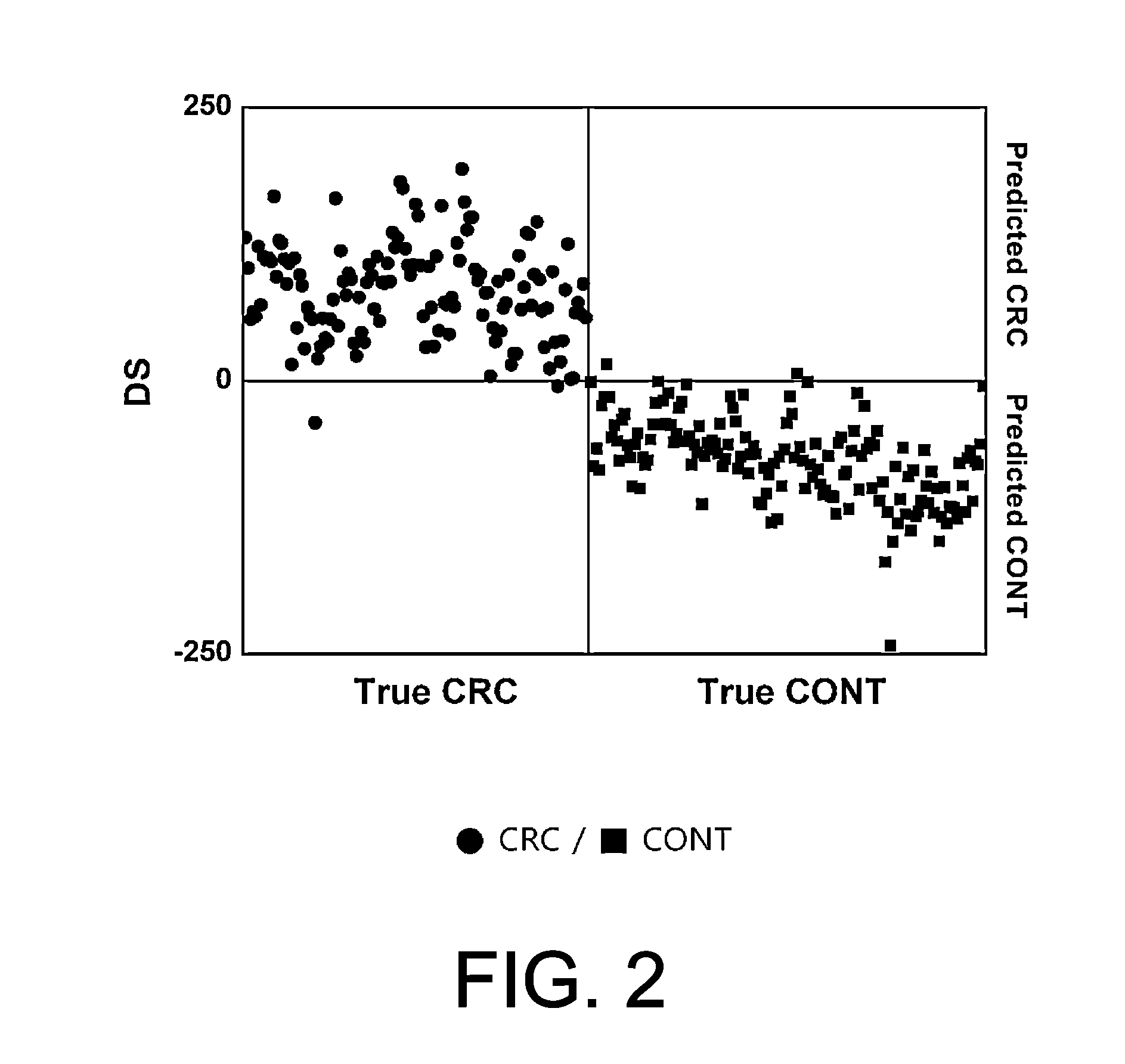However, cancer can practically develop into any place of the body.
If a patient suspected of cancer indeed has cancer, there is a possibility that the cancer spreads during
biopsy.
Further, for specific sites of a body where
biopsy is limited, diagnosing is often not available until suspicious tissues are extracted by
surgical operation.
Furthermore, even the device with the upmost precision is not able to detect a tumor under several mm in size, which means that
early detection is unlikely.
Further, in the process of
image acquisition, as a patient is exposed to
high energy electromagnetic wave which itself can induce
mutation of genes, there is possibility that another
disease may be induced and the number of diagnosis by imaging is limited.
That is, for CRC,
early detection is critical, but since endoscopic examination of large intestines and
biopsy take tremendous time and cost and also are inconvenient and painful, a diagnosis method is necessary, which can considerably reduce the number of subjects of the endoscopic examination and biopsy which can be unnecessary.
The endoscopic examination of large intestines has been utilized as a standard way of examination in the CRC screening, but due to invasiveness thereof, patients who can receive the examination are limited.
However, the markers known so far, including the above, have not met the satisfaction.
However, for the low-mass region below approximately 800 m / z where the matrix mass ions coexist, research has not been active on this particular region.
However, the discrimination result was unsatisfactory when applied with respect to the validation set (Tables 124, 126).
It appears that the
discriminant exhibiting very good discrimination result with respect to the
training set, is not so robust because the 10,000 mass ions constituting the
discriminant include a considerable amount of mass ions which may be at least unnecessary for the discrimination between CRC patients and non-cancer subjects and although not entirely problematic in the discrimination of
training set, which can potentially cause
confusion in the discrimination result in the discrimination of the validation set.
However, researchers have a long way to go until they would finally be able to implement these for
clinical treatment.
However, for the low-mass region below approximately 800 m / z where the matrix mass ions coexist, research has not been active on this particular region.
However, the discrimination result was unsatisfactory when applied with respect to the validation set (Tables 224, 226).
It appears that the
discriminant exhibiting very good discrimination result with respect to the
training set, is not so robust because the 10,000 mass ions constituting the discriminant include a considerable amount of mass ions which may be at least unnecessary for the discrimination between BRC patients and non-cancer subjects and although not entirely problematic in the discrimination of training set, which can potentially cause
confusion in the discrimination result in the discrimination of the validation set.
However, unlike the early GC, metastatic or recurrent GC shows quite undesirable prognosis, in which the median survival time is as short as 1 year or shorter.
The endoscopic examination of large intestines has been utilized as a standard way of examination in the GC screening, but due to invasiveness thereof, patients who can receive the examination are limited.
However, the markers known so far, including the above, have not met the satisfaction.
However, for the low-mass region below approximately 800 m / z where the matrix mass ions coexist, research has not been active on this particular region.
However, the discrimination result was unsatisfactory when applied with respect to the validation set (Tables 329, 331).
It appears that the discriminant exhibiting very good discrimination result with respect to the training set, is not so robust because the 10,000 mass ions constituting the discriminant include a considerable amount of mass ions which may be at least unnecessary for the discrimination between GC patients and non-cancer subjects and although not entirely problematic in the discrimination of training set, which can potentially cause
confusion in the discrimination result in the discrimination of the validation set.
 Login to View More
Login to View More  Login to View More
Login to View More 


